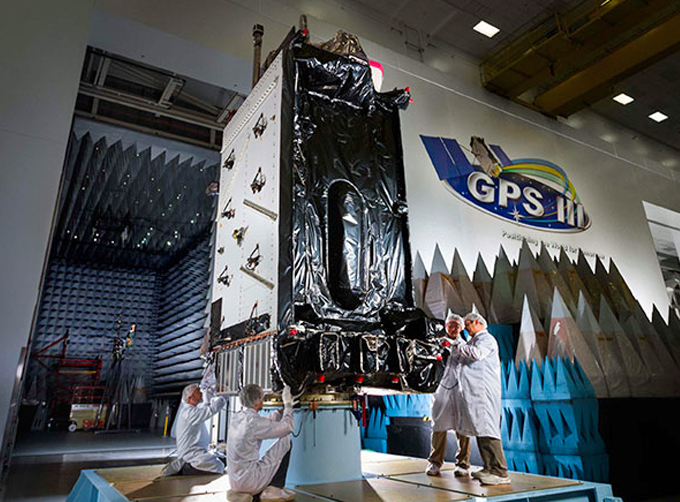
It is a part of our lives every day and over a billion people depend on this technology.
GPS, unlike any other military program, has expanded into the commercial market, becoming a mainstay of everyday life for people around the world.
Towards that end, the first of the United States Air Force’s advanced new, higher-power, harder-to-jam GPS III satellites is on its way to the launch pad.
Lockheed Martin shipped the U.S. Air Force’s first GPS III space vehicle (GPS III SV01) to Cape Canaveral on August 20, for its expected launch in December.
(In December 20118, the U.S. Air Force is expected to begin launching the most powerful GPS satellites ever designed and built – GPS III. Courtesy of Lockheed Martin and YouTube. Posted on Oct 9, 2017.)
Designed and built at Lockheed Martin’s GPS III Processing Facility near Denver, the satellite was shipped from Buckley Air Force Base, Colorado, to the Cape on a massive Air Force C-17 aircraft.
This GPS III will be the most powerful and resilient GPS satellite ever put on orbit.
Developed with an entirely new design for U.S. and allied forces, it will have three times greater accuracy and up to eight times improved anti-jamming capabilities over the previous GPS II satellite design block, which makes up today’s GPS constellation.
Additionally, with GPS II spacecraft life will extend to 15 years, 25 percent longer than the newest GPS satellites on-orbit today.

GPS III also will be the first GPS satellite to broadcast the new L1C civil signal.

Shared by other international global navigation satellite systems, like Galileo, the L1C signal will improve future connectivity worldwide for commercial and civilian users.
“Once on orbit, the advanced technology of this first GPS III space vehicle will begin playing a major role in the Air Force’s plan to modernize the GPS satellite constellation,” said Johnathon Caldwell, Lockheed Martin’s program manager for Navigation Systems.
“We are excited to start bringing GPS III’s new capabilities to the world and proud to continue to serve as a valued partner for the Air Force’s positioning, navigation and timing mission systems.”
(Learn More. See how Lockheed Martin continues to improve this U.S. Air Force provided asset with GPS III. With satellites 1-8 already in production, this entirely new satellite design will take positioning, navigation and timing to the highest level and will continue to evolve into the future. Simply put, GPS III is the most powerful and capable GPS satellite ever built – and it is already here. Courtesy of Lockheed Martin and YouTube. Posted on May 9, 2016.)

















